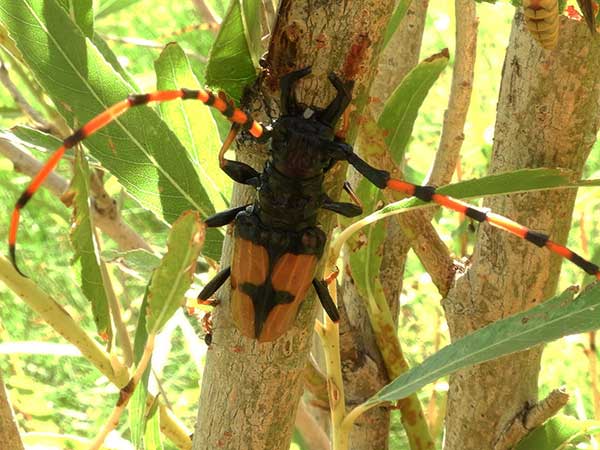Long-Jawed Longhorn
Trachyderes mandibularis

This large beetles was taking sap from a stem wound on Seep Baccharis (Baccharis salicifolia) near Bumble Bee, Yavapai Co., Arizona, USA. 3 Aug. 2019.
Cerambycidae -- Long-horn Beetle Family
Long-horned Beetles of this species begin their life cycle as a larva or grub after emerging from an egg that was deposited into an injured or dying branch, often of a palo verde tree (Parkinsonia). The growing larva tunnels through the branch. This larval stage can last many months to over a year. Emerging adults are avid visitors of ripe fruit or plant sap. Adult males use their long jaws in jostiling for position at prime feeding spots. The 'long horns' are the antennae. Males may use them also in grappling with other males as well as chemoreceptors.
Adults of the Double-banded Bycid are most likely to be found in mid summer on ripe fruit of the saguaro cactus.